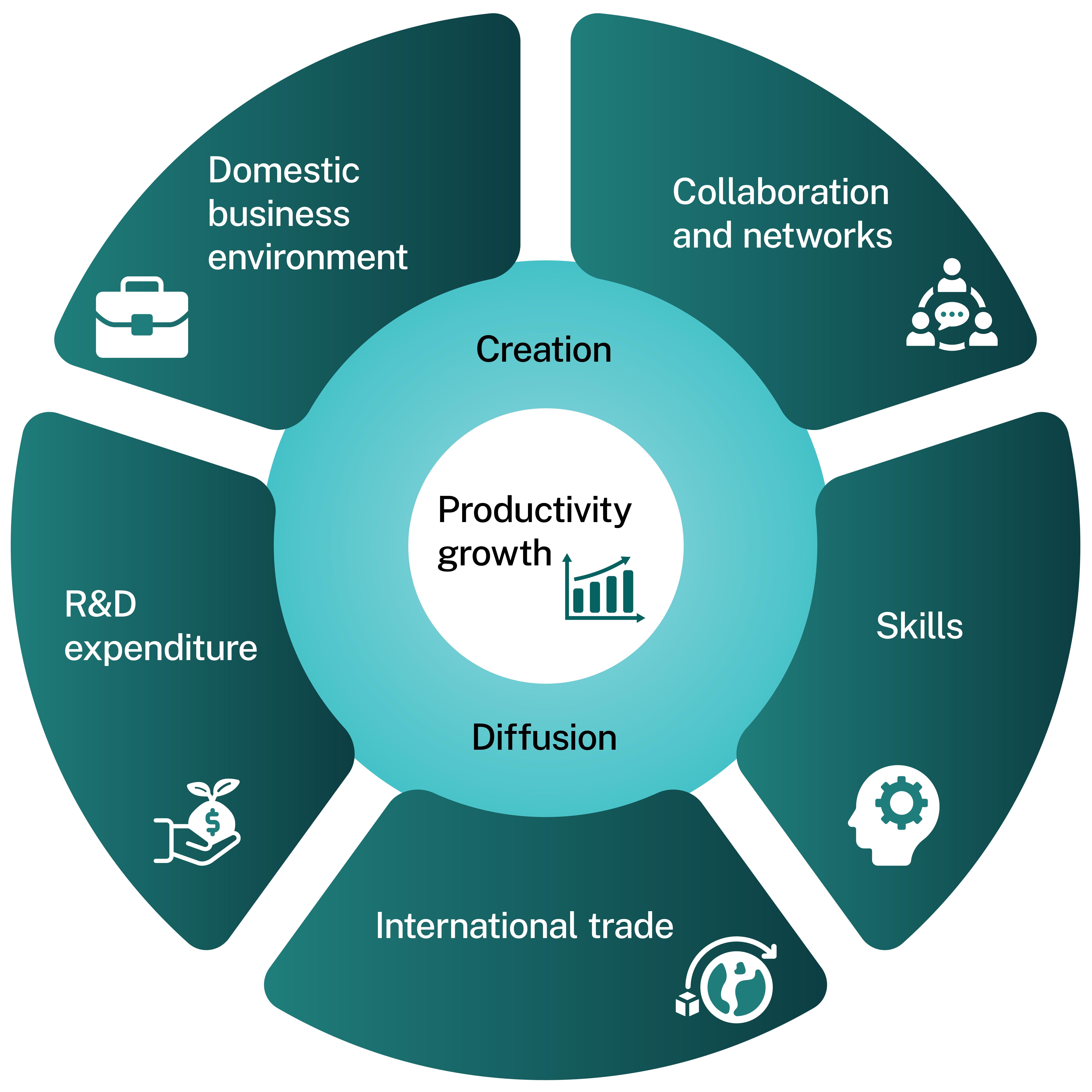Innovation refers to the creation, adaptation and use of knowledge and technology by governments, businesses, other organisations and people. It is a key driver of long-term productivity growth, which is the primary driver of broader economic growth and higher living standards.
Tracking Australian innovation and its contribution to productivity growth is crucial to informing the Australian Government’s policy agenda.
We organise AIS data in 7 dashboards, each linking to a key aspect of Australia’s innovation system.
The AIS conceptual framework diagram summarises these aspects. The framework draws on the findings of the Department of Industry, Science and Resources’ 2022 Innovation Metrics Review, the Productivity Commission’s 2023 inquiry on innovation and publications from the Office of Industry Innovation and Science Australia.
The outer circle includes key enabling factors of innovation:
- the domestic business environment (e.g. business competition, access to finance)
- international trade (e.g. import and export competition, knowledge spillovers from foreign direct investment)
- human capital and skills (e.g. workforce training; management capability)
- collaboration and networks (e.g. cross-sector partnerships)
- R&D investment (e.g. private and public R&D expenditure).
The 2 inner circles highlight Australian innovation outcomes. This includes the creation of new technology and knowledge, the adoption of existing technology and knowledge, and metrics on productivity growth. Productivity growth is the main way that innovation impacts the economy.

